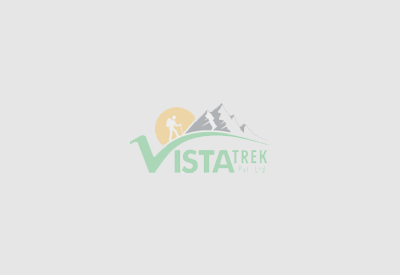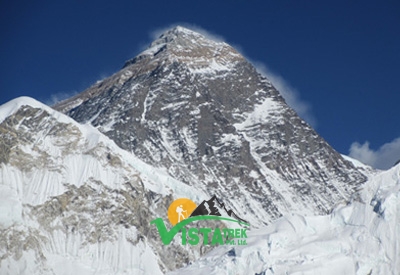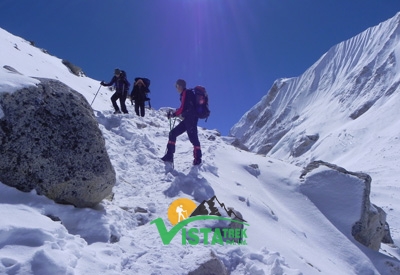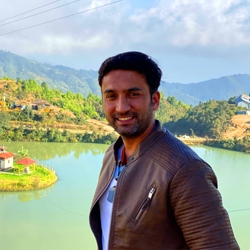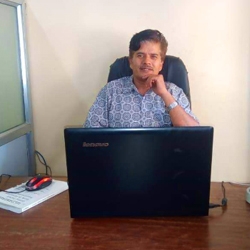Trip Facts
- Duration 30 Days
- Start FromKathmandu
- End FromKathmandu
- Trip GradeEasy
Trip Highlights
- Views the Everest Himalayas in eastern Nepal
- Relish the Sherpa heritages, culture, and lifestyle
- Trek through the UNESCO world heritage site of Sagarmatha National Park.
Trip Overview
One of the most glorious adventures in the Everest region, Ama Dablam Expedition reveals the beauty of the Himalayas. The trails on this trip extend all the way to the top of Mt. Ama Dablam (6856 m). Likewise, the Sherpa villages on the way ensure insight into their lifestyle and cultural practices. This difficult trip also includes stopping at some of the most iconic destinations in the Everest region.
The month-long expedition begins from Kathmandu where you spend a day before beginning the journey. Here, you obtain the necessary permits to travel for the arduous ascent. Then, you take a short flight to Lukla which is also the gateway of the Everest region. After walking along the fringes of the Dudh Koshi River, you cross Monjo and Jorsallevillages.
After exploring the village premises around Namche Bazaar, entering in the Sagarmatha National Park, continue the trip. along the Imja River, you head to Debuche passing Sanasa on the way. Further, you cross Tengboche and Pangboche to trek towards Pheriche. The village also offers beautiful views of the Everest ranges. At Pheriche, you spend an entire day to enjoy the villages and local Sherpa culture.
Finally, the second part of the trip begins as you head to the Ama Dablam Base Camp. Then, you can rest and prepare for the climb. After a few good sessions of climbing and mountaineering, you continue to High Camp. You will begin the journey early in the morning so as to avoid the strong mid-day winds.
The display of the Himalayas from the top of Ama Dablam includes mountains like the Mt. Everest (8848 m), Nuptse (7861 m), and Lhotse (8516 m). Then, the return trek begins as you head to Lukla in the span of the next two days. A short flight to Kathmandu brings the trip to a close.
Best time for Ama Dablam Expedition
Autumn (September to December) and spring (March to May) seasons are two best times for the Ama Dablam Expedition. Mountaineers should be in prime physical condition to do the trek.
Note:
At Vista Treks, we are always ready to provide the clients with great facilities on the trip. Also, we provide skilled guides and porters to lead travelers.
Trip Itinerary
- Upon arrival at Tribhuvan International Airport in Kathmandu, a representative from Vista Treks will receive you outside the airport. You will drive to your hotel with views of the hustling town. Check-in your room to refresh and rest.
- Later, you will visit the Vista Trek’s office for a discussion on yourAmaDablam Expedition. You will be introduced to the adventure guide and porters. In the meantime, we’ll settle the dues and complete the paperwork. If you have time in hand, you can consider exploring Thamel Bazaar and do some shopping.
- The morning will follow with a delicious breakfast in either the hotel’s garden or the roof, overlooking the beautiful mountains like Ganesh Himal and Langtang. As nothing is planned for today, you can either choose to relax in your hotel and pack your stuff for the trek or you can go out and explore the city.
- If you wish to indulge in a sightseeing tour of the historical Kathmandu city, we will provide you a private car with an experienced tour guide. He will escort you to different tourist destinations and UNESCO World Heritage Sites such as Pashupatinath, Swayambhunath, Boudhanath, Kathmandu Durbar Square, and Patan Durbar Square.
- You can choose to indulge in a rock-climbing experience at a local rock-Climbing Station in Thamel.
- You will embark on the earliest flight from Kathmandu to Lukla today. A 35-minute flight offers the spectacular views of the serene hills and the snow-capped Himalayas. You can enjoy the breathtaking aerial view of central and eastern Nepal.
- The trek commences after breakfast and advances from Lukla to Phakding Village. The trek may last from 3 to 4 hours depending on your pace. The early section of the trail is relatively comfortable and passes through four Sherpa villages en route. Explore the beautiful houses with stone walls and colorful roofs. The trail is often decorated with Buddhist prayer flags and Buddhist iconography on stones.
- Walk along DudhKoshi River to arrive at Phakding. Once in the village, you can explore the vicinity or relax in your hotel.
- Overnight in Phakding.
- The day begins with a delicious breakfast at the hotel. Leaving Phakding, you’ll make your way uphill and begin crossing high-suspension bridges before arriving at Monjo Village. Monjo marks the entrance to the Sagarmatha National Park, a UNESCO World Heritage Site. After obtaining the entry permit, you’ll continue through the forested path and climb further to arrive at Namche Bazaar.
- Namche is the largest Sherpa village in the Everest region. Leave your bag at the hotel; and head out to explore the beautiful bazaar while admiring the teahouses, shops, and restaurants.Enjoy the beautiful view of theKongdeRi peak (6187m) towering above the bazaar.
- Overnight in Namche Bazaar.
- Today is a rather relaxed day. After breakfast, you will begin exploring the magnificent Bazaar area. You can embark on a short hike to the nearby Khumjung Village.
- Khumjung Monastery (3790m) in Khumjung village remains a major tourist attraction mainly for the purported Yeti scalp preserved inside a glass box. You can witness the Yeti scalp and explore the monastery before heading towards Hillary School. Walk past the potato fields and Syangboche Airstrip. After exploring the school, you’ll begin climbing down the trail heading back to Namche.
- After an early breakfast, you’ll embark on a short trek towards Debuche village. The trail continues uphill alongside the DudhKoshi River. Continuing along the usual Everest trail, you’ll pass along many Sherpa settlements.
- The beautiful view of the Himalayan peaks like Everest, Lhotse, Nuptse, and AmaDablam will be visible almost throughout the trail. A short sharp hike will take you to Tengboche Monastery. After exploring the highest monastery in the region, you’ll descend to Debuche village for the overnight stay.
- After a delicious breakfast, you’ll embark on yet another day of the trek. Leaving Debuche, you’ll begin climbing the rugged trail leading towards Pangboche village. Pangboche is a scenic village located amidst Everest in the north, AmaDablam, Thamserku, and Kantega in the east, and KongdeRi in the south.
- The trail goes alongside the majestic ImjaTse River that flows through the wide valley. You’ll continue climbing uphill until you arrive at Pheriche village.
- Overnight in Pheriche.
- As you're above 4000 meters, you must stay put and acclimatize before embarking further up.
- Drink enough fluid to avoid AMS (Altitude Mountain Sickness). To better prepare your body for the rest of the expedition, you’ll climb a steep terrain just above the Pheriche village. A good amount of hiking will take you to the hilltop.The majestic views of the surrounding mountains will be your award.
- In case you need medical assistance, Pheriche houses a local hospital that serves all kinds of trekkers and climbers. The local check post runs under the Himalayan Rescue Association (HRA).
- Overnight in Pheriche.
- After breakfast, you’ll begin trekking back towards Pangboche village. The trail continues alongside the DudhKoshi River. After a brief stop at Pangboche, you’ll continue down the trail and cross the river to climb the steep trail leading towards AmaDablam Base Camp.
- You’ll arrive at a large grassland situated in the lap of AmaDablam peak. Enjoy the rest of the day admiring the hanging glacier “Dablam.”
- AmaDablam stands for 'Mother's Necklace.' The peak resembles the traditional double-pendant worn by local Sherpa women.
- You will be camping today. The night will be spent inside a tent.
- Today is an essential acclimatization day. You will indulge in preparing for the climb followed by a short pre-climb training by your climb guide.
- Your guide will provide training on peak climbing, and offer what-to and how-to guidelines. He will provide a usability guide for ice ax, climbing boots, harness, and ascenders. You will learn about the best usage of the climbing rope and the rules of alpinism.
- You will rest at the base camp preparing your body and mind for the upcoming adventure.
- Overnight inside a tented camp.
- We have 15 days to safely climb AmaDablam and head back to the Base Camp.
- The scheduled climb will take you to Camp I at 5700m, followed by an ascent to Camp II and Camp II. From Camp III, you’ll attempt for the summit.
- The climb to Camp I is filled with technical difficulties. You must be prepared to tackle the technical section of the early climb.
- You’ll leave from Camp I to Camp II using fixed ropes. The knowledge of using rope and ascenders come handy in this section of the climb. The trail contains both rocks and snow. You will acclimatize at Camp II before approaching forward.
- The section leading from Camp II to Camp III comprises of climbing rocks, snow and ice. You’ll encounter many technical sections that require the use of ice-ax and crampons. Acclimatize at Camp III.
- From Camp III, you’ll attempt the summit. The climb from Camp III leading to the summit is relatively less technical, however, you must be prepared to face the offset led by the changing weather.
- From the top, you can enjoy the panoramic view of the entire valley and the mountains located in Nepal and Tibet.
- After summiting the peak, we will head back to the base camp.
- Leaving AmaDablam Base Camp, you’ll head towards Pangboche and make your way towards Tengboche Monastery.
- Tengboche Monastery is the highest Buddhist monastery in the region. You can visit the monastery and even receive blessings from the local monks. The monastery hosts the grand festival of Mani Rimdu every October.
- Leaving Tengboche, you’ll trek back to Namche Bazaar. Continuing through the usual route, you’ll trek back to Monjo and exit Sagarmatha National park.
- An interesting trek through Phakding will bring you back to Lukla. Celebrate the completion of the trip with your team.
- Leaving the mountainous region, you’ll embark on a short flight fromLukla to Kathmandu.
- Catch the aerial view of the pristine Everest region, towering Himalayan peaks, and lush forested hills en route to Kathmandu. Enjoy the aerial view of the Kathmandu as you land at Tribhuvan International Airport.
- Check into your hotel and head outside to explore the city. You can choose to visit the nearby massage center to enjoy a full body massage and relieve your body pain.
- It is a leisure day in the city.You can either relax at the hotel or embark on a city tour.
- You can choose to visit some of the UNESCO World Heritage Sites located outside Kathmandu City such as Patan Durbar Square and Bhaktapur Durbar Square
- Enjoy a lavish farewell dinner in one of the finest Nepali restaurants.
- Share your holiday experience with us over dinner.
- Enjoy your breakfast at the hotel.
- Depending on your flight timing, we’ll drop you off at Tribhuvan International Airport.
Cost Includes
- Pick up and drop from Airport –Hotel-Airport.
- Deluxe hotel accommodation in Kathmandu with breakfast.
- An English speaking guide, cook, porter, Sherpa and helper boy
- Full board of meals during the trek & camping at base camp, prepared by our cook with hot Tea & coffee.
- Insurance for all Nepali staffs and porters including helicopter rescue provision.
- Expedition permit, National park fees and Garbage deposits.
- Liaison officer and his round trip flight, insurance, wages, expedition equipment etc.
- A portable hyperbaric chamber (Gamow bag)
- Oxygen equipment for medical use only.
- A well stocked first aid and medical kit sufficient to counter any possible mountaineering ailments, from headache to serious injury.
- Oxygen 2 bottles per team climber and 1 bottles per Sherpa.
- Mask regulator
- Emergency communications on the mountain and satellite communications link for helicopter evacuation. (Personal calls subject to charges at US$ 3 per minute)
- High quality tents for all camps.
- Boiled and purify drinking water for the trek and at base camp.
- Flight fare from Kathmandu to Lukla and from Lukla to Kathmandu
- Farewell dinner party in Kathmandu
- Climbing Sherpas (1 member = 1 Sherpa Ratio on climbing day)
- High altitude climbing food, fuel, Gas above base camp (you are also advised to bring some high altitude food yourselves)
- All base camp and Advance base camp camping gears
Cost Excludes
- Lunch & dinner in Kathmandu Hotel
- International airfare
- Nepal entry visa fee, which can be obtained at the airport upon arrival {bring 4 copies passport size picture too}
- Alcoholic beverages , bottle mineral water, soft drinks and snack foods
- Personal climbing gear above advance base camp
- Personal insurance such as travel, accident, medical, emergency evacuation and lost luggage
- Overstay in Kathmandu Hotel as per itinerary
- Tips and Bonus to our staff


 +977 9841322985
+977 9841322985 